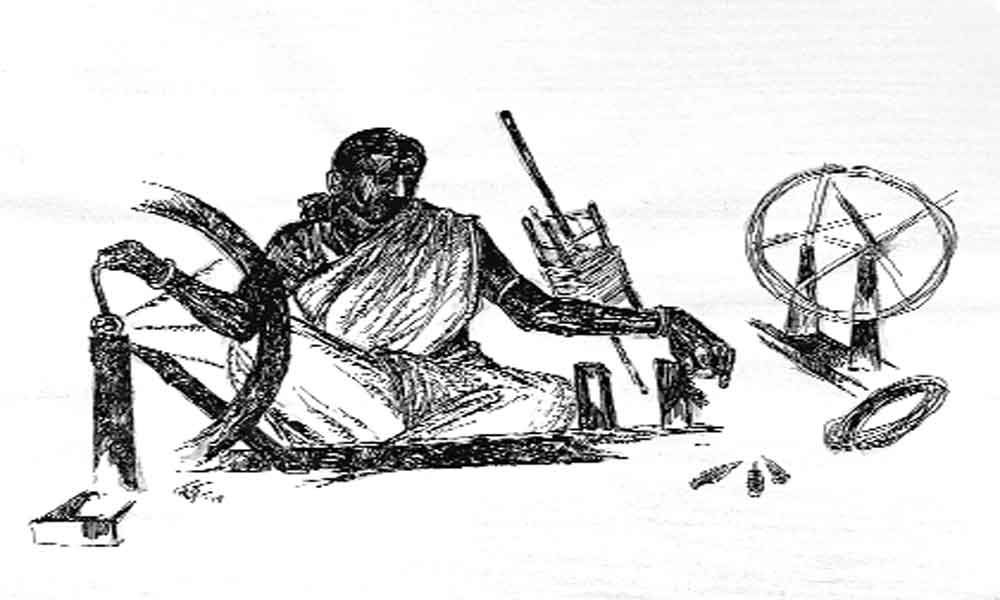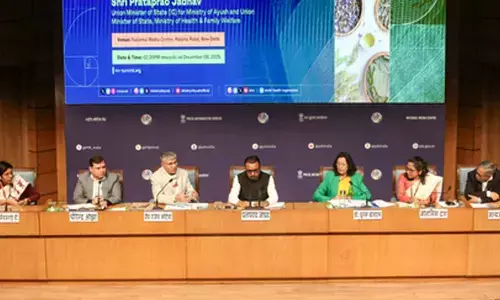A Journey through making of Mallesham

Laxman Aelay’s association with filmmaking, as an art director, had been a success story until he found his place in the mainstream art scenario.
Solo show of drawings and installations that artist Laxman Aelay created in the context of the biopic film, 'Mallesham' will be inaugurated on June 19 at State Art Gallery
Laxman Aelay's association with filmmaking, as an art director, had been a success story until he found his place in the mainstream art scenario. His reengagement with a vernacular biopic 'Mallesham', which highlights an inspiring life of a rural weaving artisan, Padma Shri awardee Chintakindi Mallesham of Sharjipet, can be seen as a continuum, where he exploits the possibilities of art and film as inter-medial tools to interpret the regional cultural contexts.
Being a first ever, full-length biopic on a Telangana artisan, 'Mallesham' was a perfect platform for Laxman Aelay to reiterate his renewed interest in the discourse of the dynamics and episteme of vocation/caste communities that he brought forth in his doctoral research.
As a close aid to the team, Laxman Aelay's intervention is evident in the formulation of native dialect, art and form that manifest the indigenous culture. Contributing to many facets of the film, Laxman observes how the intermedial aspect of his art that is produced during his frequent visits to the location and his scrupulous story-board cater to a perfect mise en scène, which in turn result in experiential reality on a celluloid screen.
Thus, the making of 'Mallesham' is not only an exciting endeavour but also a discourse of regional identity, where the act of weaving and weaving a story in the light of native cultural consciousness is a clever craft that constructs a cultural paradigm.
Unlike his earlier body of artworks, the present exhibition is in tandem with the launch of the biopic for which he contributed as a Production Designer. The recent drawings and installations created in the context of 'Mallesham' may be seen as testimonies of Laxman's overtly ambitious disposition, both as an artist who advocates for indigenism and as an insider of the vocational community who witnessed the predicaments of weavers in Telangana.
The drawings and sketches that are produced during the film depict working class people, often morphed with exaggerated angular or manneristic rendering. With this temperament, the artist seems to have moved away from his usual depiction of strong beautiful women in leisure often bedecked with ornaments and celebratory mood.
The elements that he incorporated in his sinuous renderings with blatant expressionistic treatment signify a language of corporeality and complex livelihood of the rural people. The black and white drawings show thread-like pen and ink lines, often woven with masses of broken and crippled lines into unknown certainty; they reflect the act of weaving the light, a hope for better future.
If we compare these works to his earlier set of artworks, he seems to have quietly distanced himself from the grand celebration of "doing culture" to the very core of the way of life in a matriarchal community. The symbolic depiction of woman, engaged in spinning yarn and juxtaposed with broken spindles and "aasu" machines, is now more than an illustration of a frozen sight, which is a point of departure in the context of the film 'Mallesham'.
With this sort of disposition, Aelay tries to offer a combination of tangibility and actuality of the conditions of weaving as vocation transmediating the static images to the moving images presaging an advancement of science of the vocational community. With these dichotomies, the artist ushers for new dimension in his practice and dissemination of the underpinnings of cultural/community identity.














